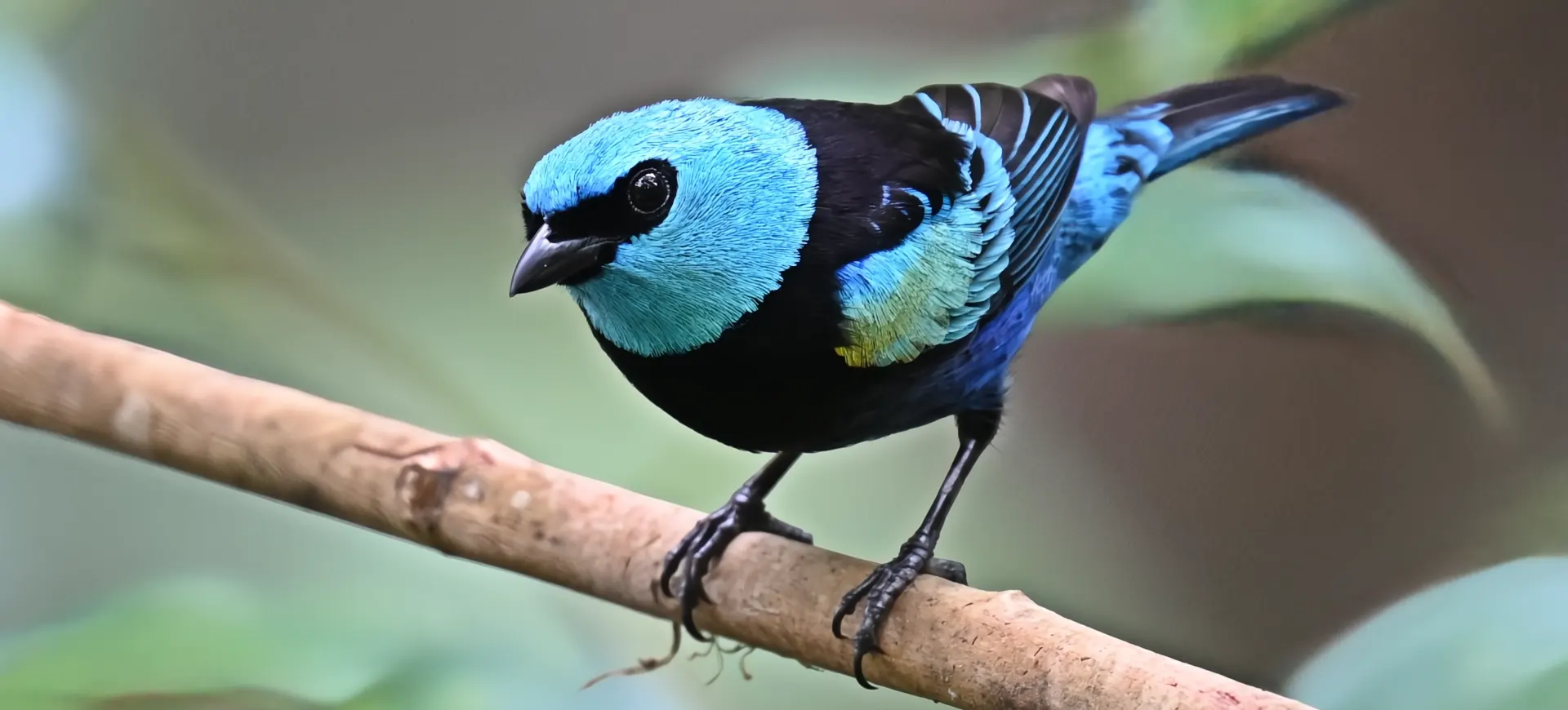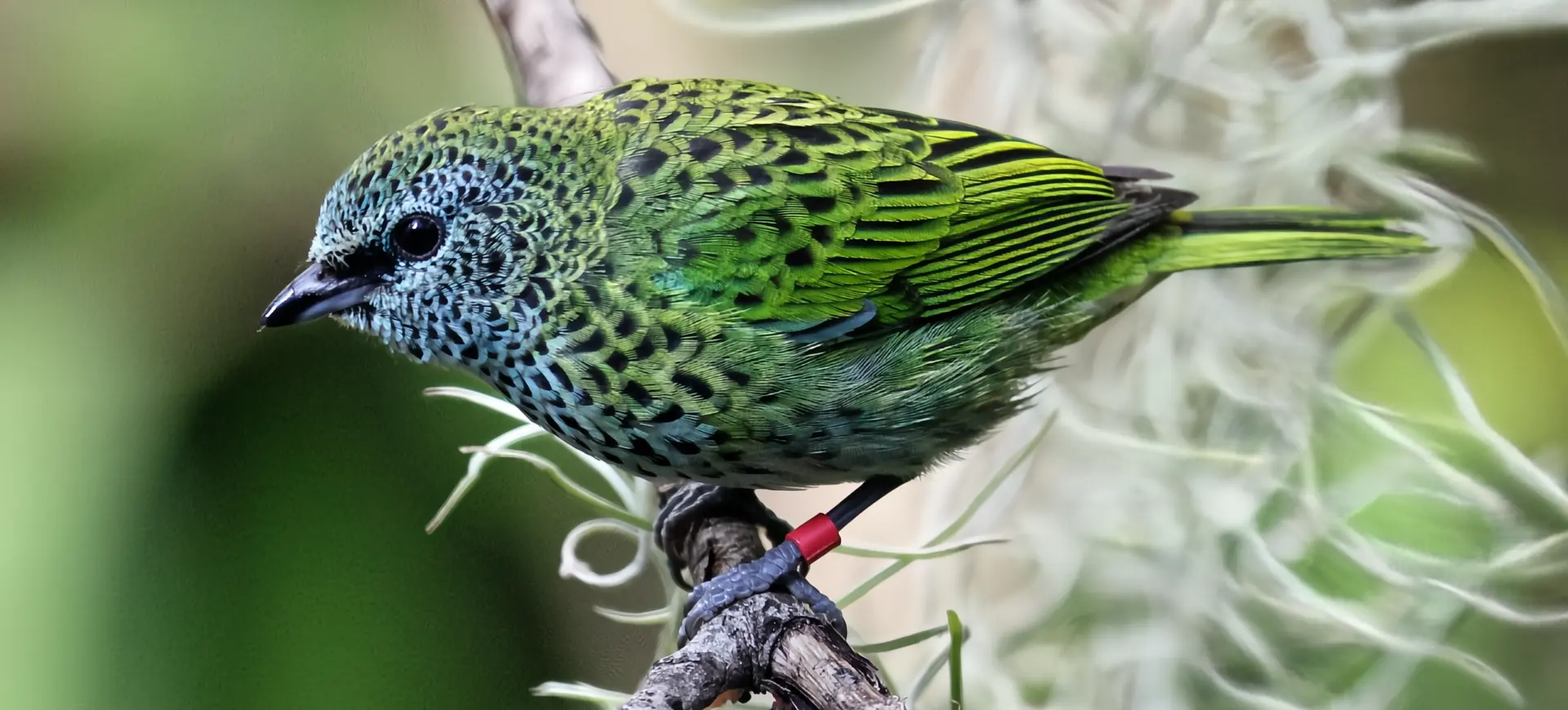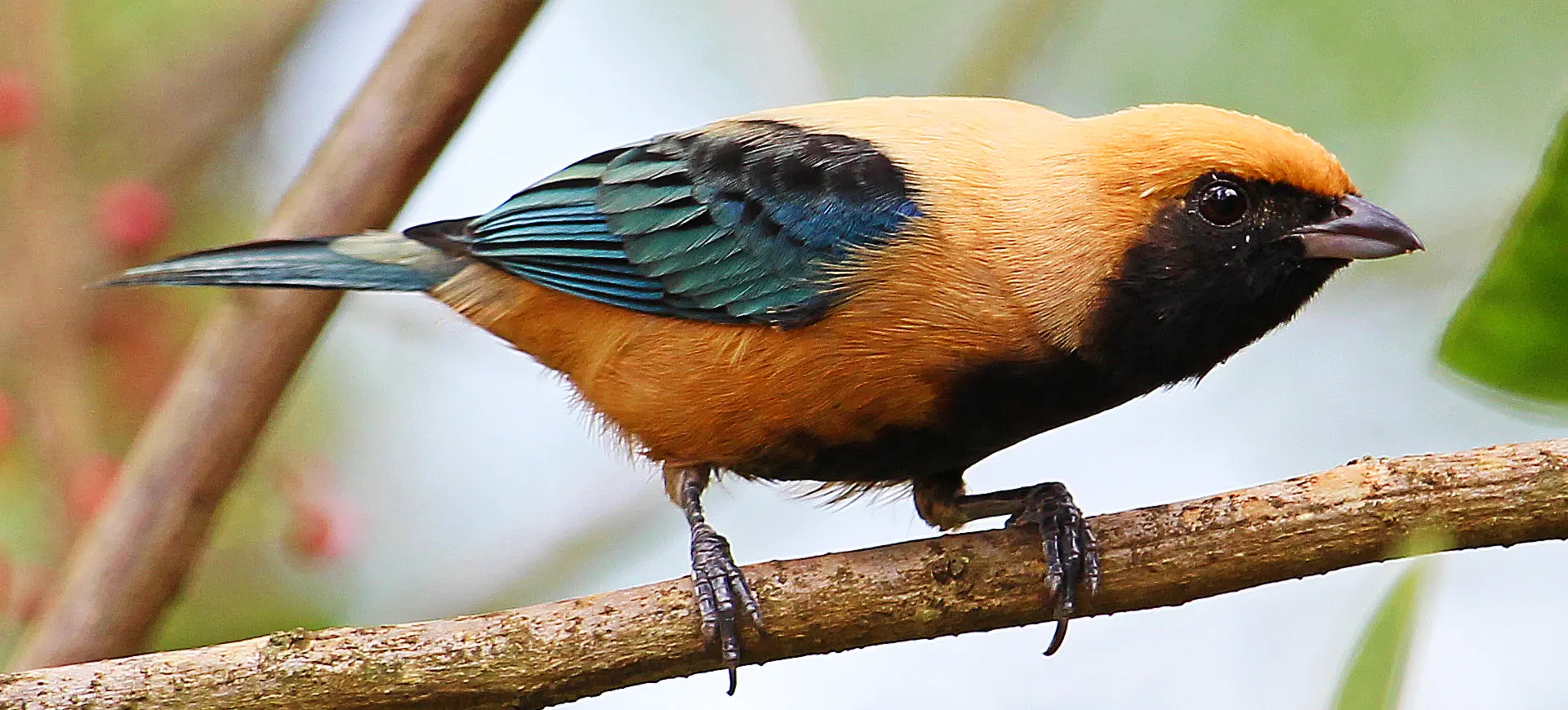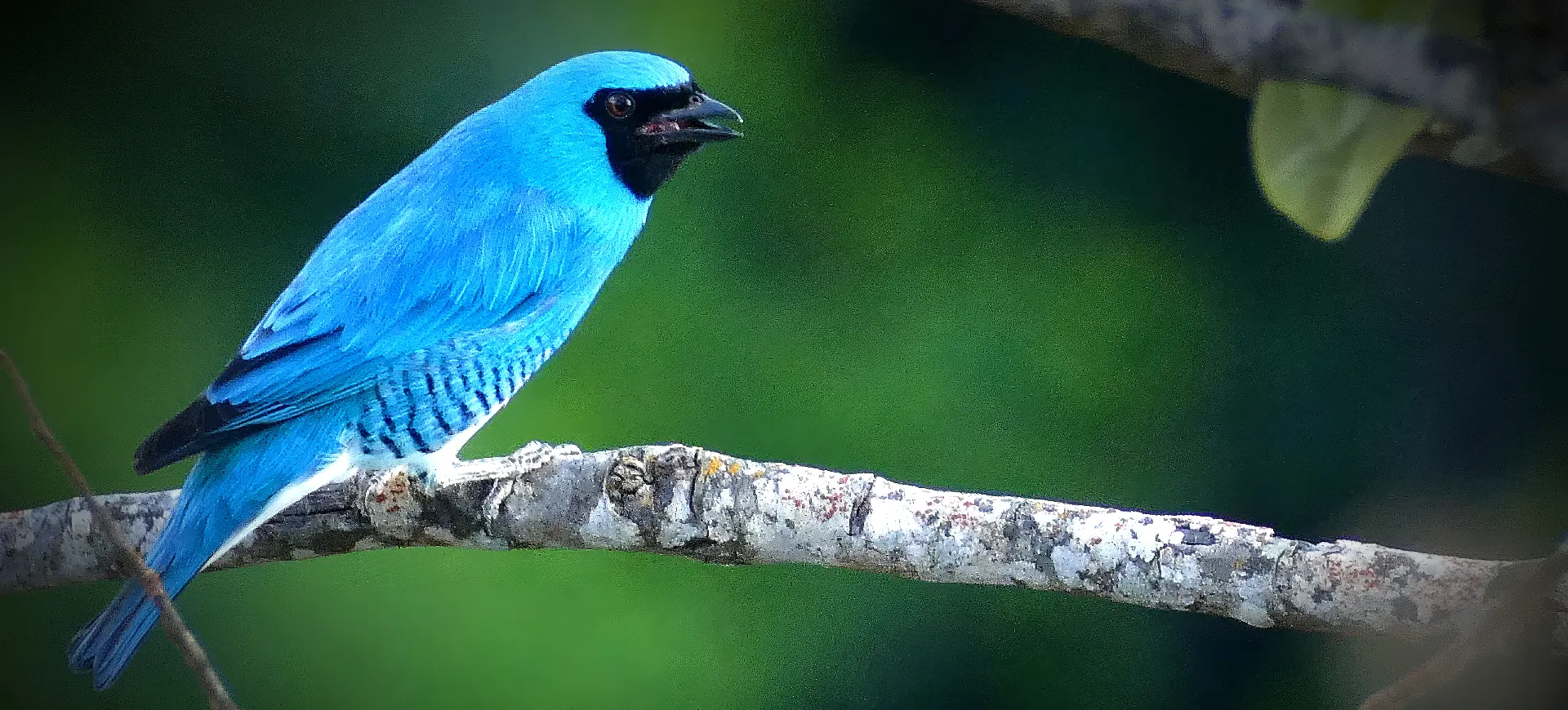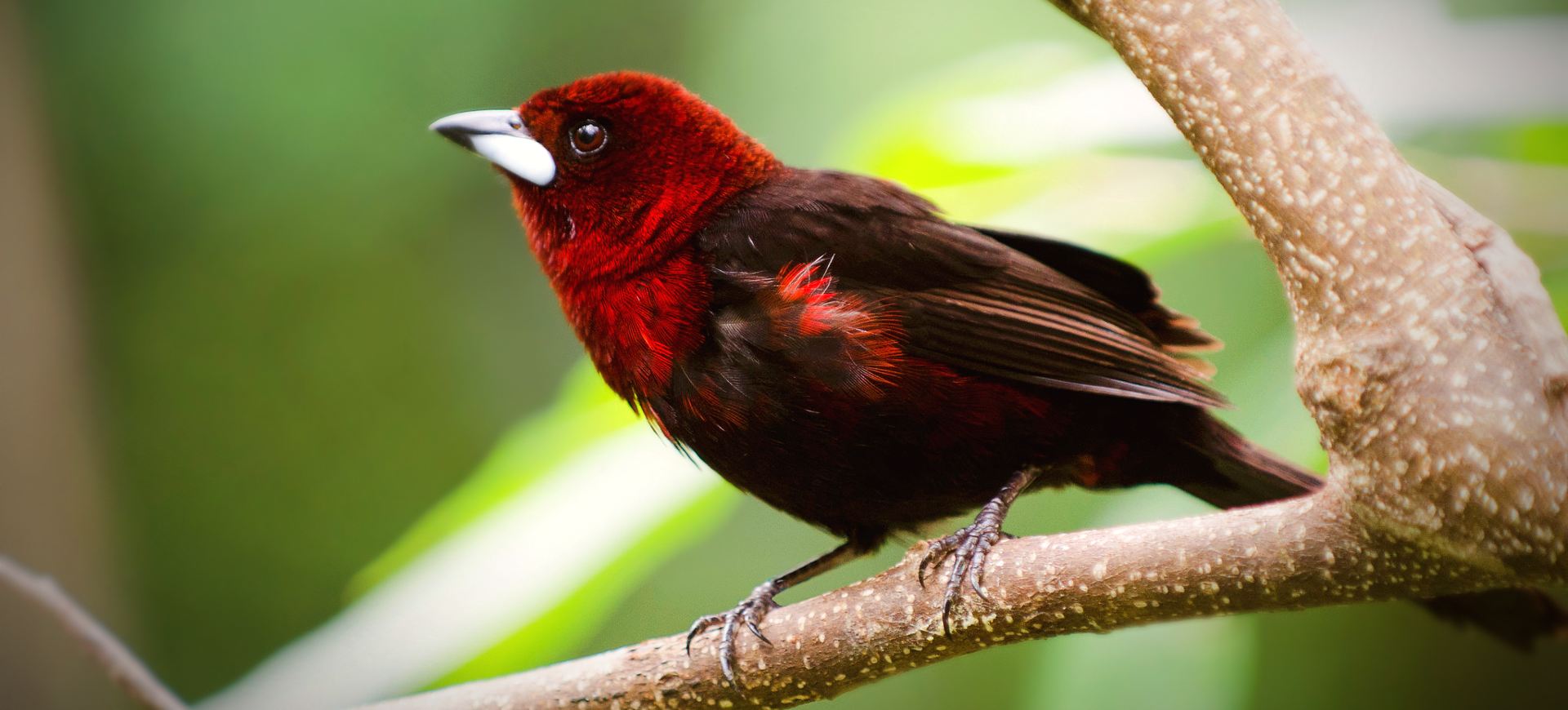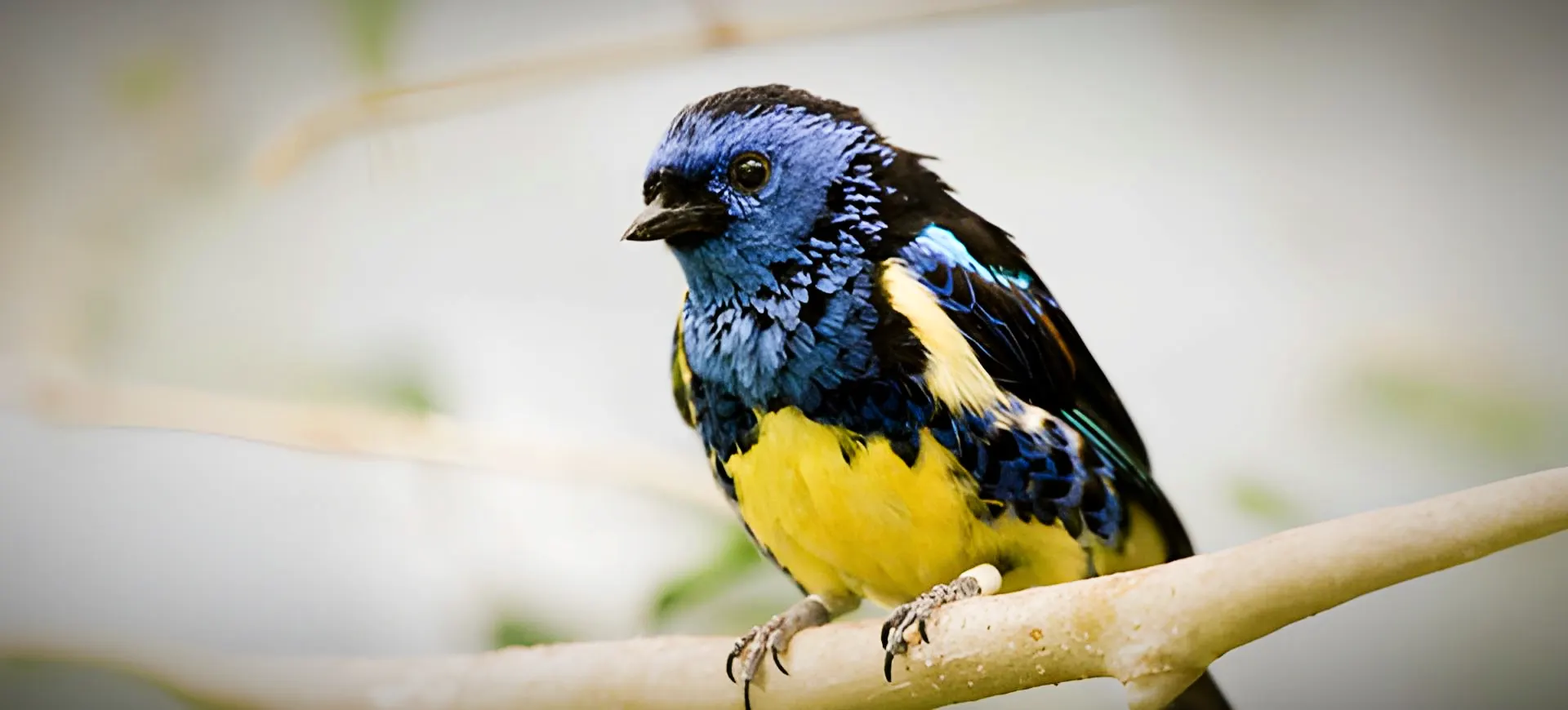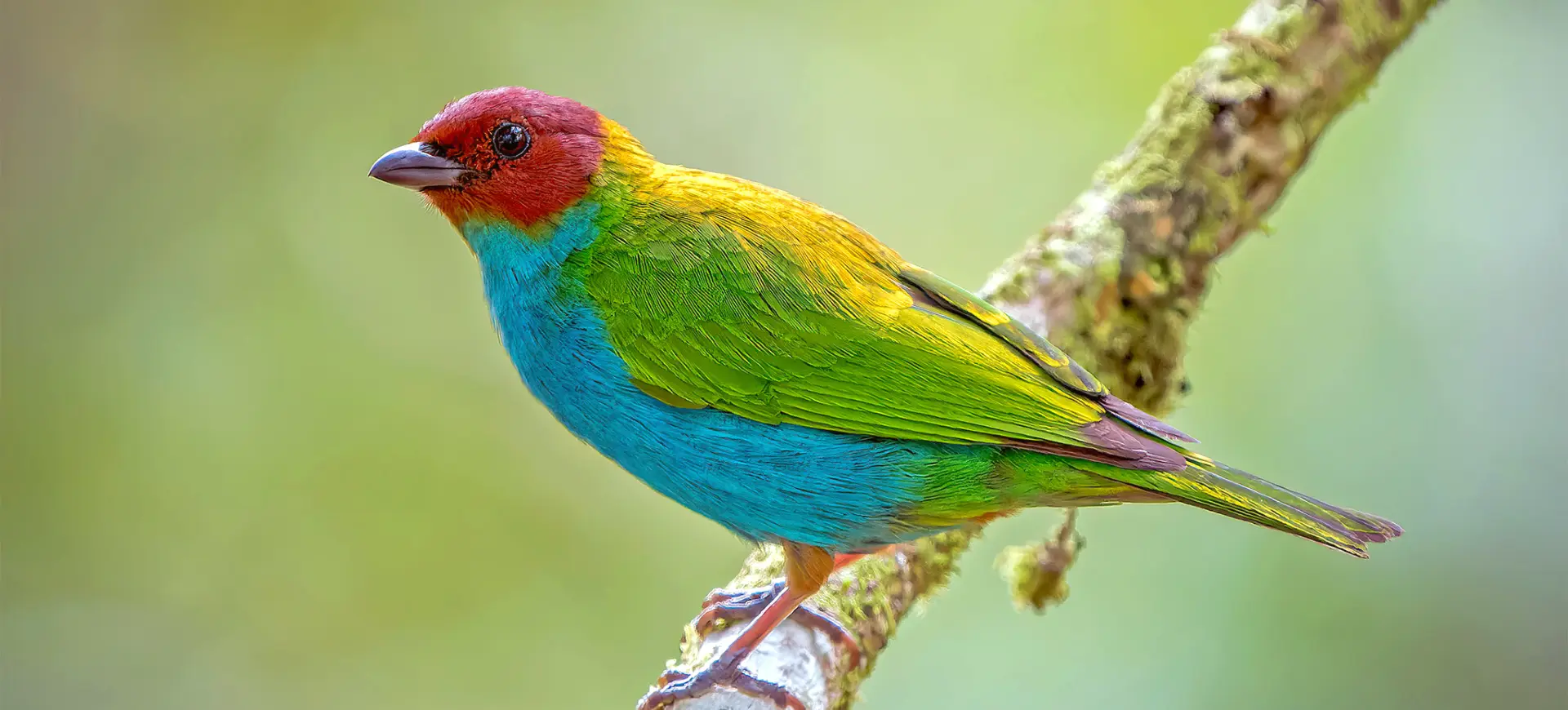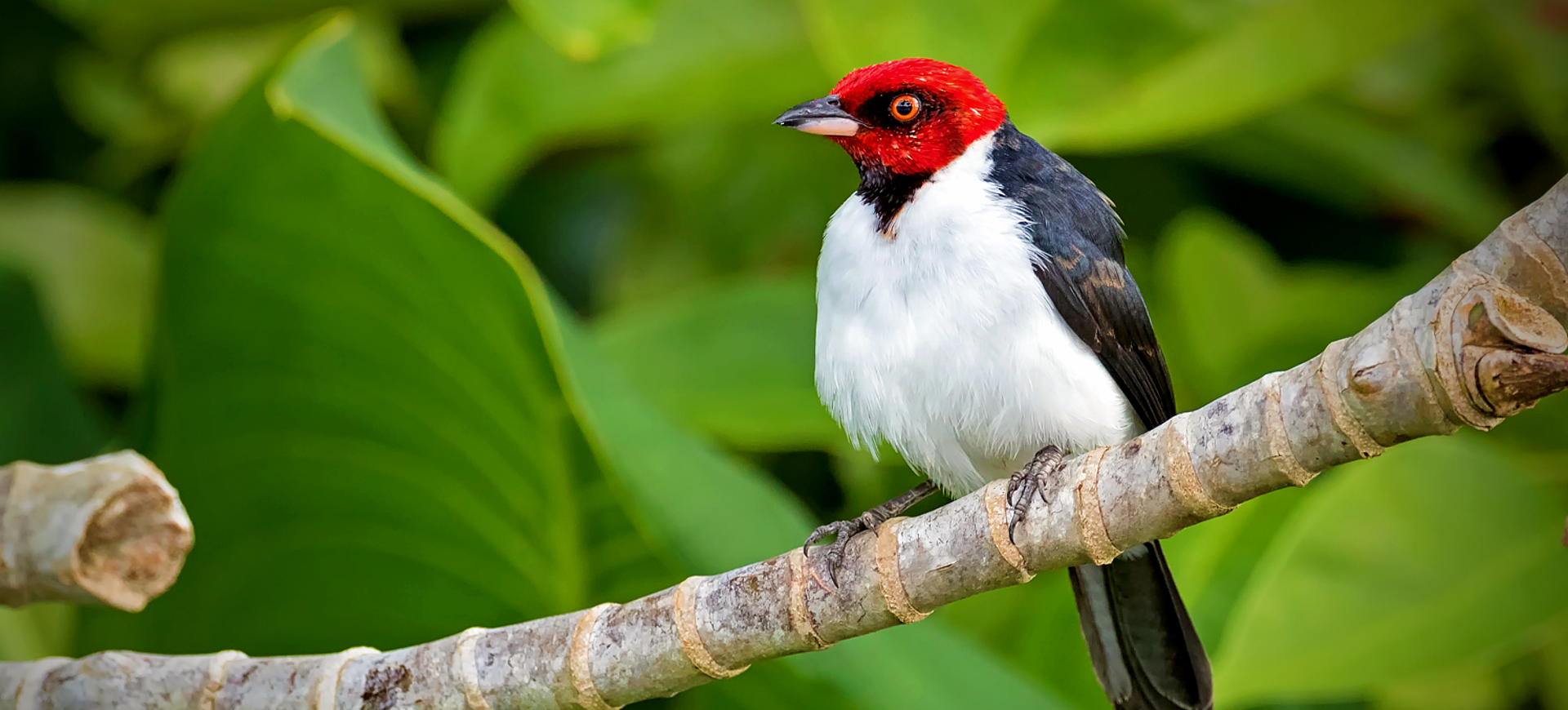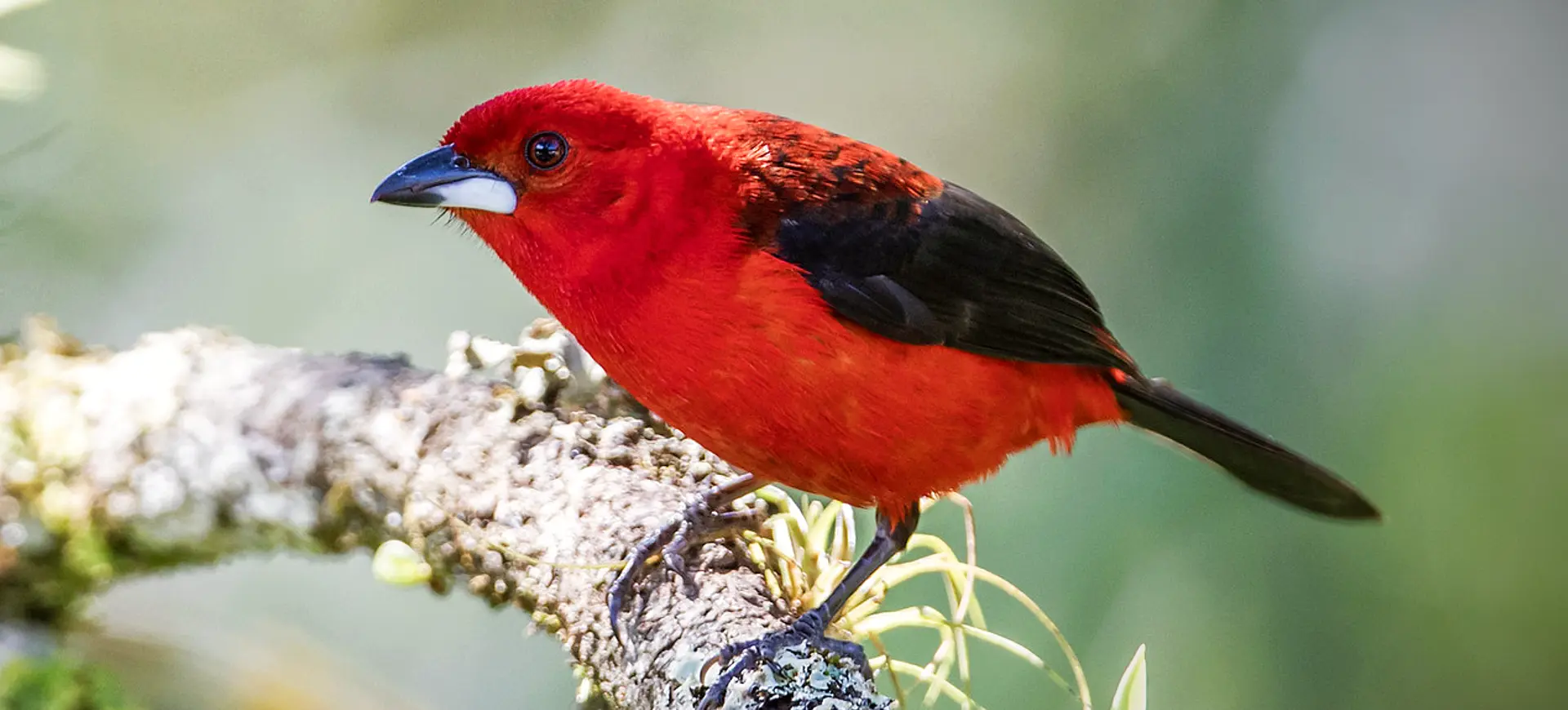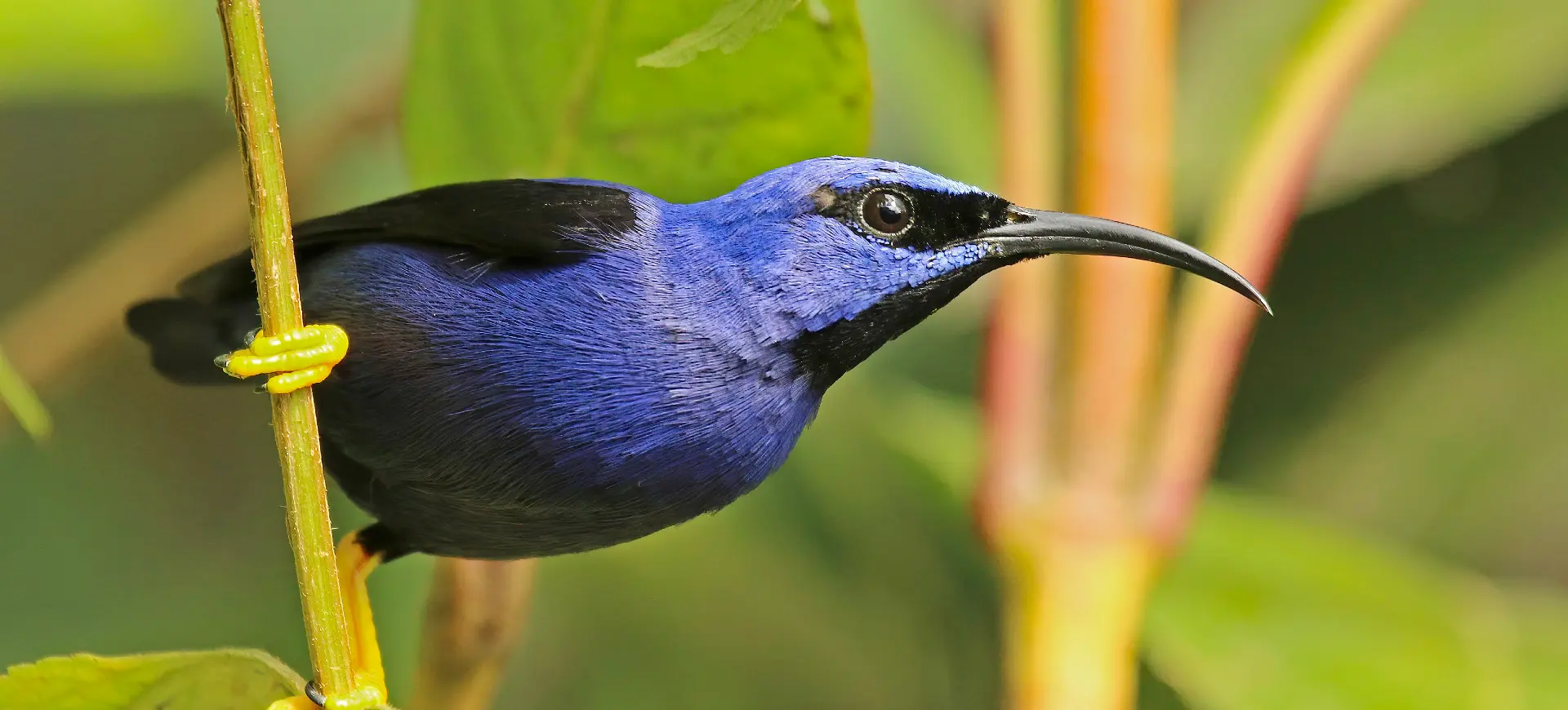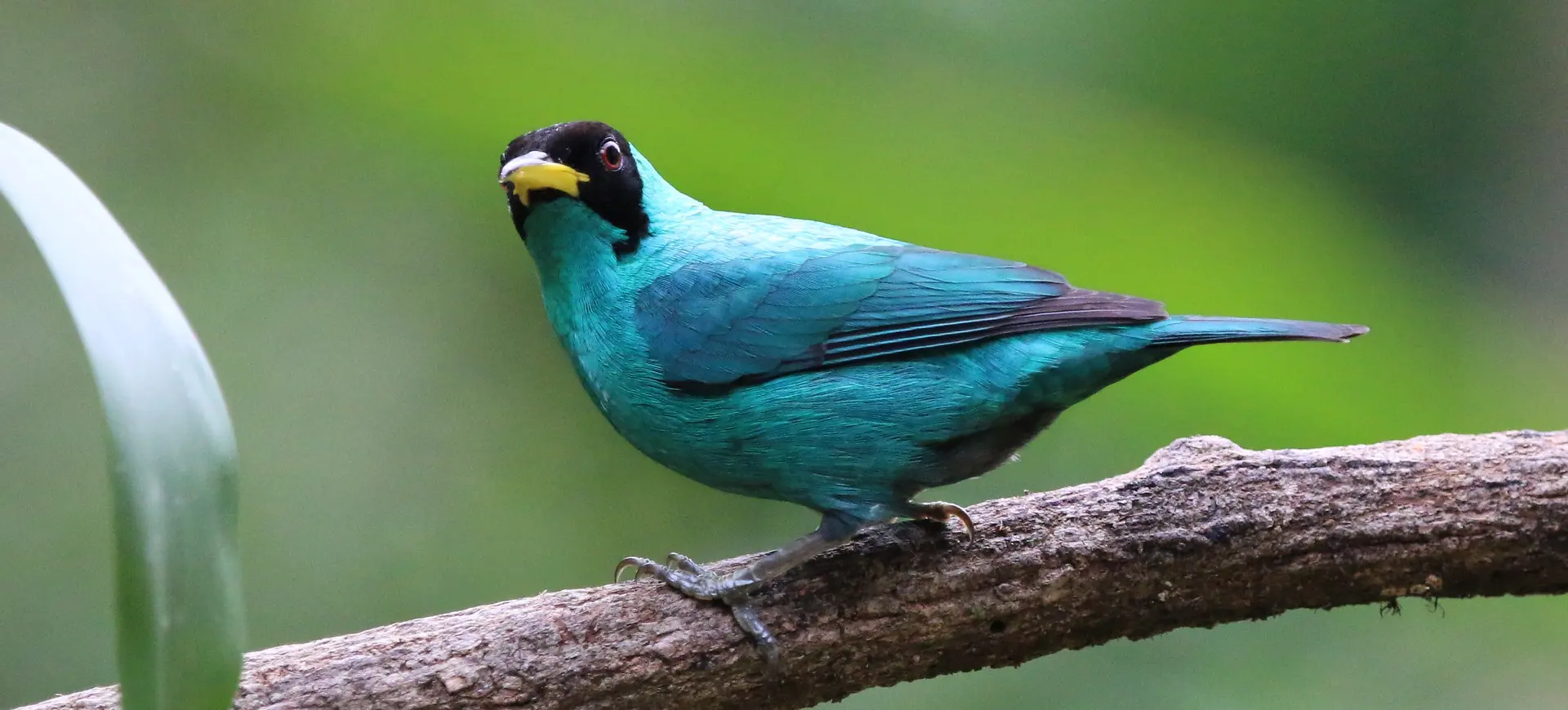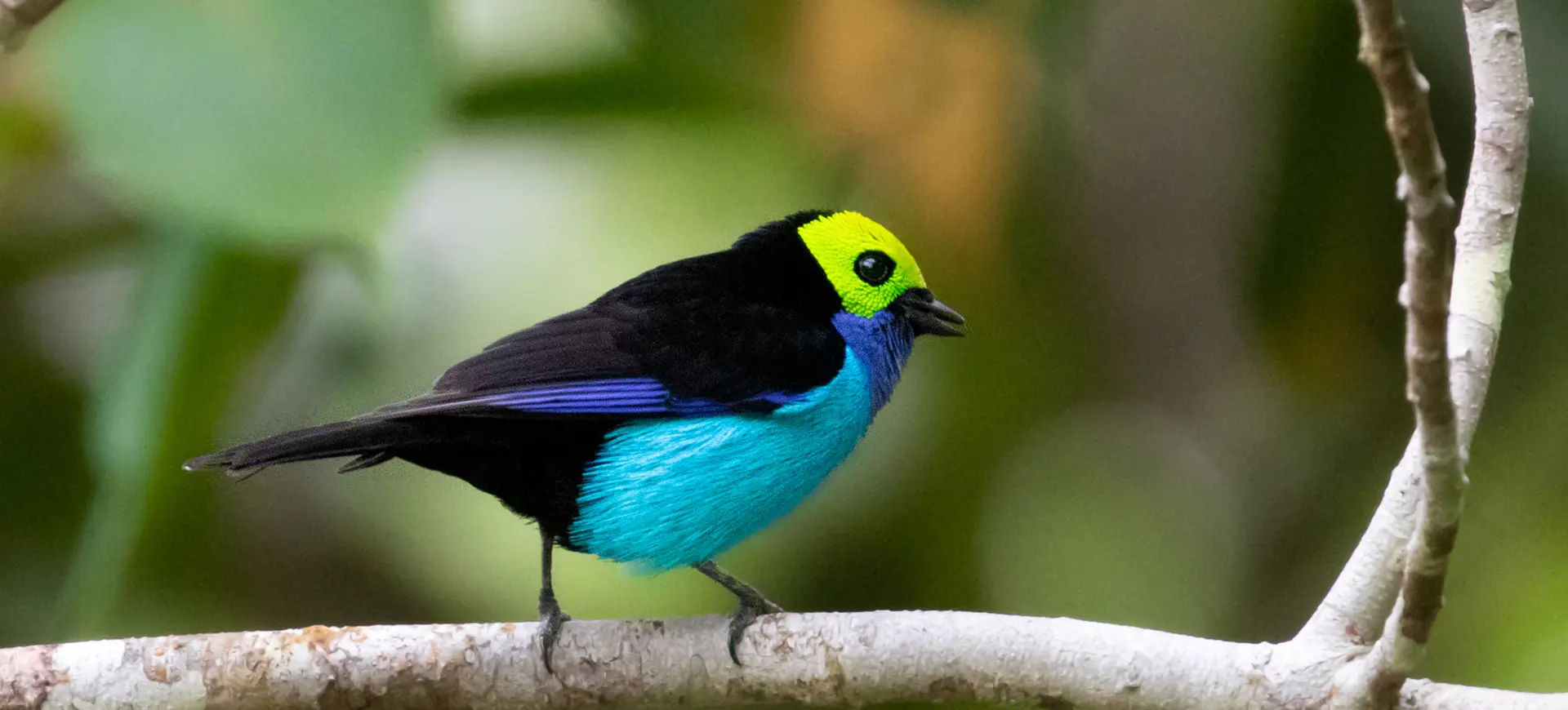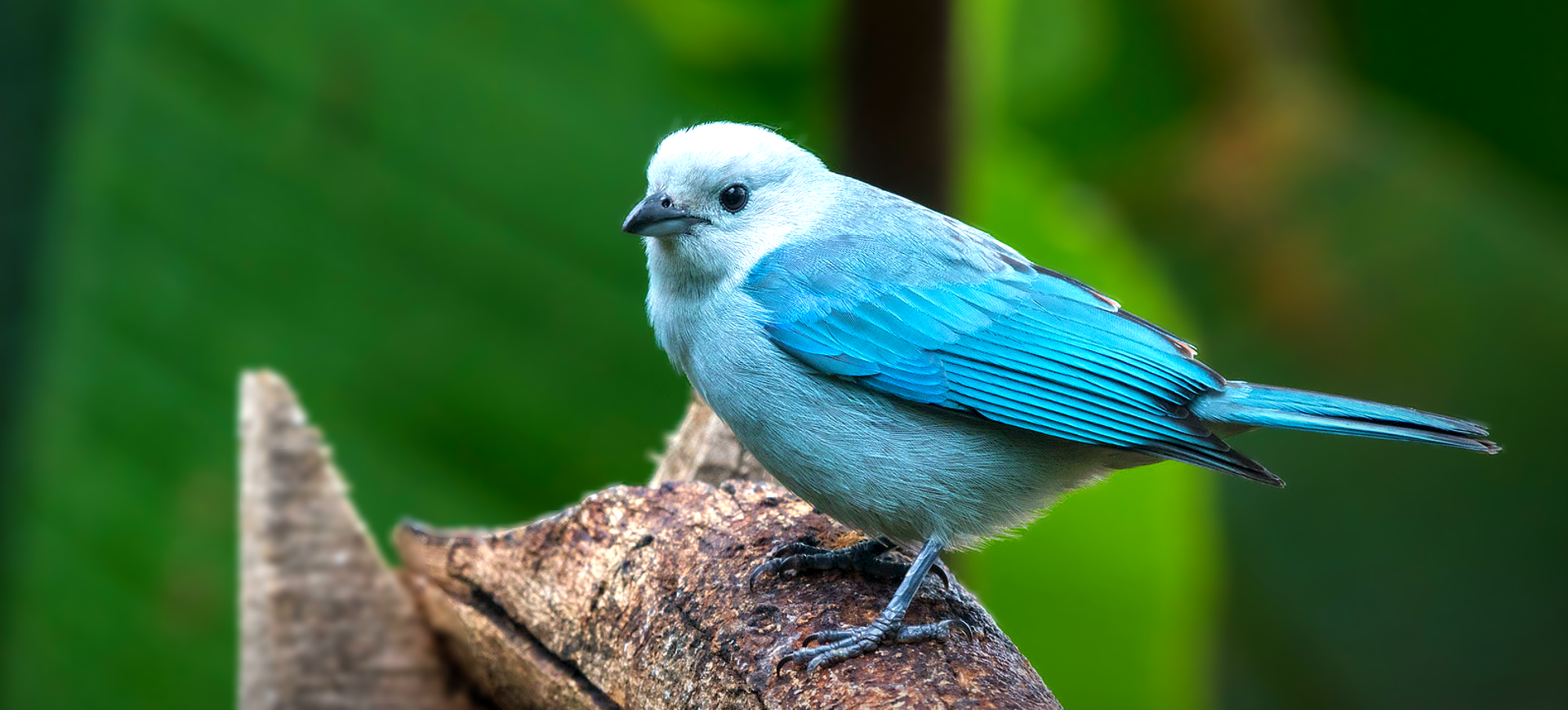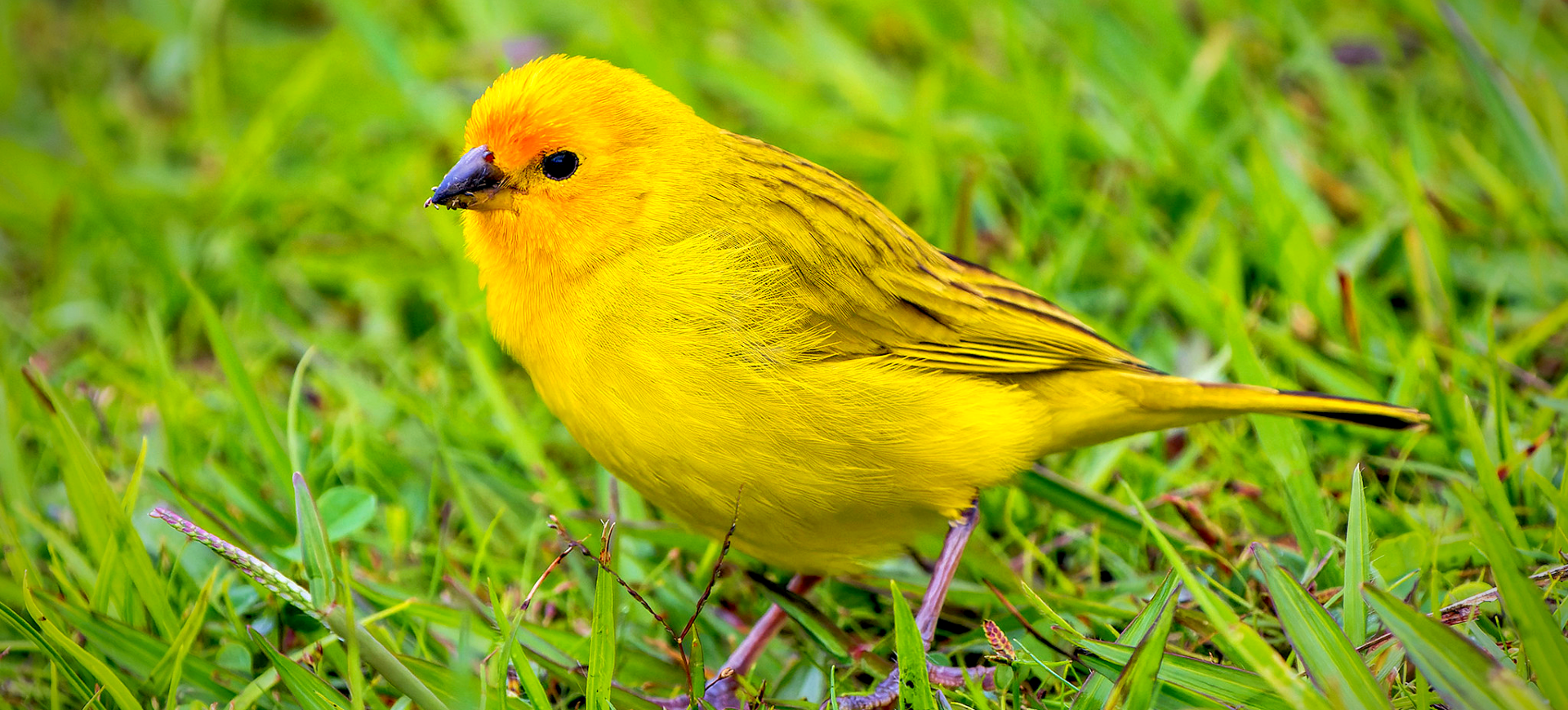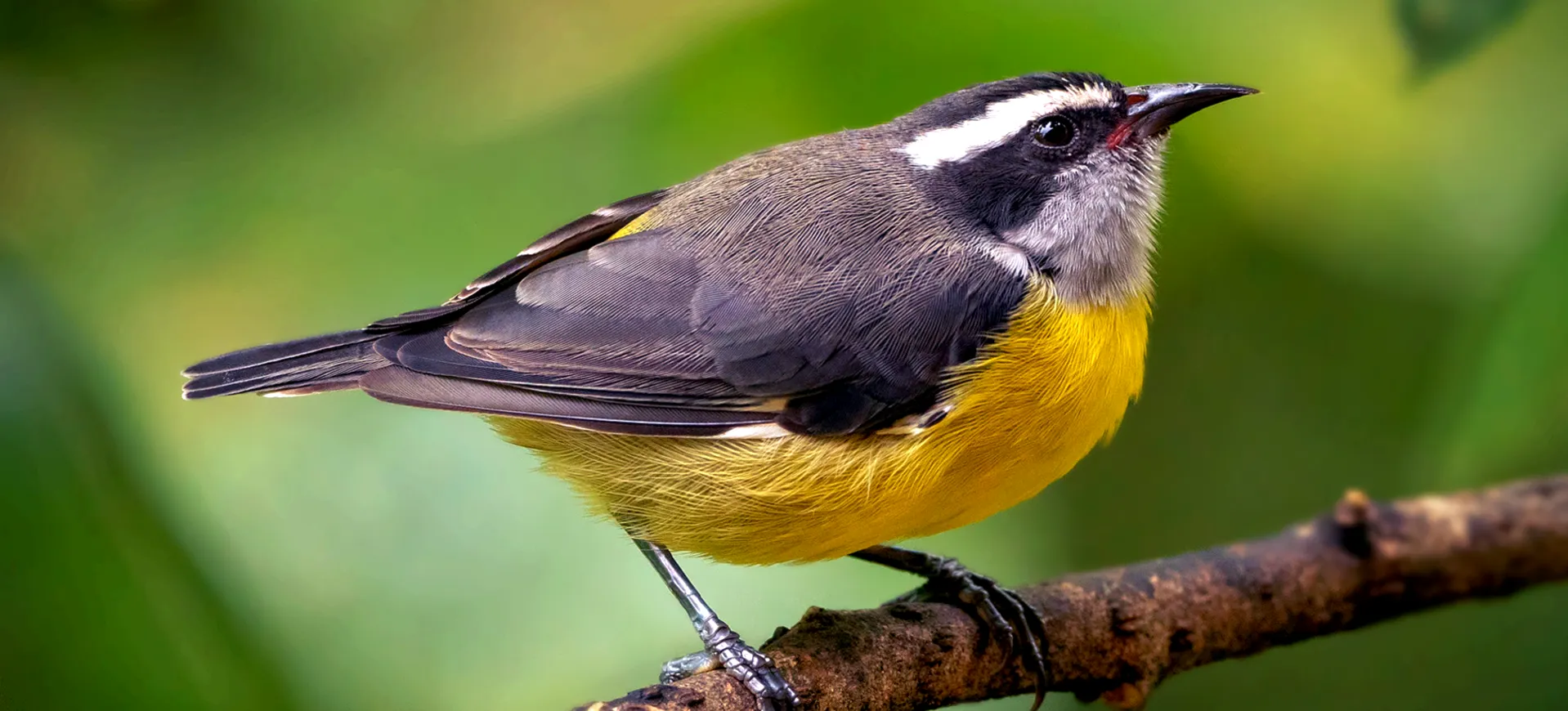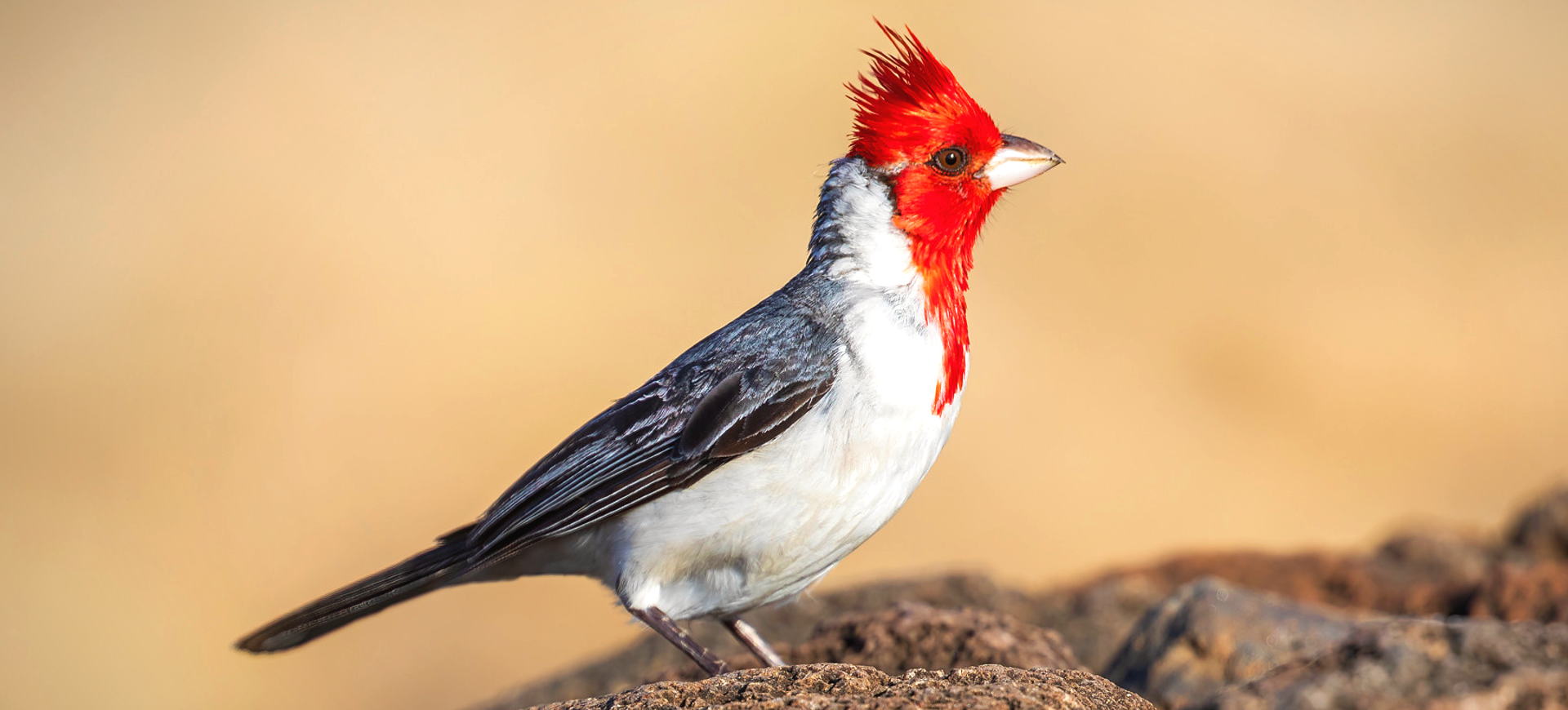Overview
The Opal-rumped Tanager, Tangara velia, is a strikingly beautiful bird native to the tropical forests of South America. Characterized by its vibrant plumage, the Opal-rumped Tanager features a unique combination of colors, including a deep blue head, greenish upper parts, and a distinctive iridescent blue on the lower back and rump, from which it derives its name. This species is medium-sized for a tanager, measuring approximately 13 to 14 cm long. The bird’s underparts are a contrasting bright yellow, making it one of the more visually captivating species within its habitat.
Found predominantly in the Amazon Basin, the Opal-rumped Tanager inhabits areas rich in dense canopy cover, such as lowland tropical forests, river edges, and secondary growth areas. These habitats provide the necessary resources for the species to thrive, including food and nesting sites. The Opal-rumped Tanager is known for its social behavior, often seen in mixed-species flocks with other tanagers, feeding on a diet predominantly consisting of fruits and occasional insects and nectar. This diet highlights the bird’s role in seed dispersal and pollination within its ecosystem, contributing to the biodiversity of its environment.
Despite habitat loss and fragmentation challenges, the Opal-rumped Tanager maintains a stable population, classified as Least Concern by the IUCN. However, preserving its tropical forest habitat is crucial for ensuring the species’ long-term survival. Conservation efforts focused on protecting these forests are essential, as they support not only the Opal-rumped Tanager but also a wide array of flora and fauna unique to South America’s tropical ecosystems.
Taxonomy
Kingdom
Phylum
Class
Order
Family
Genus
Species
Sub Species
Type
Physical Description:
The Opal-rumped Tanager’s plumage is a mesmerizing display of nature’s artistry, blending iridescent blues, greens, and yellows. The most striking feature is the iridescent blue that adorns its lower back and rump, shimmering in the sunlight and giving the bird its common name. The deep blue of the head contrasts beautifully with the yellow underparts, while the greenish hues on the upper parts allow it to blend into the leafy backdrop of its habitat. Both males and females exhibit similar color patterns, challenging sex differentiation based solely on external appearance.
The bird’s physical structure is well-adapted for life in the dense canopy. Its strong, short beak is designed for foraging fruits, and its agile body enables it to easily navigate through complex foliage. Despite its vibrant colors, the Opal-rumped Tanager can be surprisingly difficult to spot when it remains still among the trees, camouflaged by the play of light and shadow through the canopy.

Weight: Male & Female: 0.6-0.85 oz (17-24 g)

Length: Male & Female: 5-5.5 inches (13-14 cm)

Wingspan: Male & Female: 6-7 inches (14-17 cm)

Top Speed: Unknown
Characteristic:
Native Habitat:
The native habitat of the Opal-rumped Tanager is the lush, lowland tropical forests of the Amazon Basin, extending into areas with secondary growth and along river edges where forest canopies provide abundant fruiting trees. These environments offer the ideal combination of food sources and nesting sites for the species’ survival. Adapted to life in dense vegetation, the Opal-rumped Tanager prefers areas with high biodiversity, where it can exploit a variety of fruiting plants throughout the year.
The preservation of these habitats is vital for the Opal-rumped Tanager and countless other species that share its environment. Efforts to protect and restore the tropical forests of South America are crucial in combating the effects of deforestation and ensuring the continued health of these biodiverse ecosystems.
Climate Zones:
Biomes:
Biogeographical Realms:
Continents:
Diet:
Diet & Feeding Habits:
The diet of the Opal-rumped Tanager is primarily frugivorous, consisting largely of various tropical fruits that provide the necessary nutrients for its health and vitality. This feeding behavior plays a critical role in the forest ecosystem, as the bird acts as a seed disperser for many plant species, aiding in the regeneration of its habitat. In addition to fruits, the Opal-rumped Tanager occasionally supplements its diet with insects and nectar, showcasing its adaptability and ecological role in pollination and insect population control.
Typically found foraging in the canopy, the Opal-rumped Tanager often joins mixed-species flocks, which enhances foraging efficiency and reduces predation risk. This social feeding behavior underscores the interconnectedness of species within tropical forest ecosystems, highlighting the importance of preserving biodiversity for the health of these complex habitats.
Mating Behavior:
Mating Description:
The Opal-rumped Tanager is believed to practice monogamy, with pairs forming strong bonds during the breeding season. Nesting typically occurs in the dense foliage of trees or shrubs, where the female constructs a cup-shaped nest out of plant fibers and other materials. This secluded nest site helps protect the eggs and chicks from potential predators. The female lays 2 to 3 eggs per clutch, which she incubates until they hatch.
Both parents are involved in caring for and feeding the chicks, demonstrating the species’ cooperative breeding behavior. This parental investment ensures the survival of the offspring until they are ready to fledge. The breeding season is closely tied to food availability, highlighting the importance of fruit abundance for the reproductive success of the Opal-rumped Tanager.
Reproduction Season:
Birth Type:
Pregnancy Duration:
Female Name:
Male Name:
Baby Name:
Social Structure Description:
The Opal-rumped Tanager is known for its friendly nature, which is especially evident during foraging activities, where it frequently participates in mixed-species flocks traversing the forest canopy in pursuit of sustenance. This collective foraging approach enhances the efficiency of locating food and significantly lowers the threat of predation for the participating species. Such behavior underscores the bird’s adaptability and the complex social interactions that define its daily existence within the vibrant ecosystems of tropical forests.
However, the onset of the breeding season witnesses a shift in this friendly demeanor, as Opal-rumped Tanager pairs exhibit increased territorialism, dedicating themselves to nurturing and protecting their offspring amidst the dense foliage that offers seclusion and safety. Understanding these seasonal variations in social behavior is critical for developing effective conservation strategies and habitat management practices, ensuring that interventions are tailored to support the natural life cycle and ecological interactions of the Opal-rumped Tanager.
Groups:
Conservation Status:
Population Trend:
The Opal-rumped Tanager faces significant challenges from habitat loss, a common plight among forest-dwelling species. This encroachment is primarily driven by deforestation for agricultural practices, logging activities, and the sprawl of urban development. This encroachment diminishes the crucial spaces these birds rely on for nesting and foraging and adversely affects the variety and availability of fruiting plants essential to their diet. The degradation of their natural environment threatens the delicate balance necessary for their survival, highlighting the urgent need for conservation measures.
Furthermore, climate change introduces an additional, pervasive threat to the Opal-rumped Tanager by potentially disrupting the phenology of the fruiting plants they depend on for sustenance. Such ecological shifts could lead to mismatches in the timing of food availability, placing further stress on these birds as they navigate the challenges of a changing environment. The combined effects of habitat loss and climate change underscore the importance of targeted conservation efforts to mitigate these impacts, ensuring the continued survival of the Opal-rumped Tanager and the complex ecosystems they inhabit.
Population Threats:
Habitat loss, primarily from deforestation for agriculture, logging, and urban expansion, poses the most significant threat to the Opal-rumped Tanager, a fate it shares with numerous other forest-dwelling species. The reduction in their natural habitats limits their nesting and foraging areas. It significantly affects the diversity and availability of essential fruiting plants, which form a critical component of their diet. As these environments are diminished, the intricate balance necessary for the sustenance and reproductive success of the Opal-rumped Tanager is disturbed, emphasizing the urgent need for protective measures to preserve their living spaces.
In addition to habitat destruction, climate change introduces a substantial long-term risk to the Opal-rumped Tanager by potentially disrupting the phenological patterns of the fruiting plants they rely on for nourishment. Such shifts could lead to a mismatch between the birds’ feeding habits and the availability of food resources, compounding the challenges they face in adapting to an already changing landscape. This scenario underscores the importance of addressing habitat conservation and climate change mitigation to safeguard the future of the Opal-rumped Tanager and the biodiversity of the ecosystems they inhabit.
Conservation Efforts:
Conservation strategies for the Opal-rumped Tanager emphasize the importance of safeguarding and rehabilitating its natural tropical forest habitats. By creating and upholding protected areas and advocating for sustainable land use practices beyond these sanctuaries, conservationists aim to maintain the environments crucial for the survival of this vibrant bird species. Such efforts are vital in mitigating the impact of deforestation and ensuring that the Opal-rumped Tanager has access to the necessary resources for nesting, foraging, and thriving.
Additionally, initiatives like reforestation projects play a pivotal role in the conservation of the Opal-rumped Tanager by replenishing its dwindling habitats and promoting the growth of a wide variety of fruiting plants upon which it heavily relies. Protecting existing forests and restoring degraded ones contribute significantly to preserving the biodiversity of tropical forests, thereby supporting not only the Opal-rumped Tanager but countless other species that share these rich ecosystems. These collective conservation actions are essential for tropical forests’ continued health and diversity and the myriad lives they sustain.
Additional Resources:
Fun Facts
- The Opal-rumped Tanager’s iridescent plumage can appear to change color under different lighting conditions, creating a dazzling display.
- Despite its colorful appearance, the bird can be difficult to spot in the dense canopy, blending into the foliage until it moves.
- It plays a crucial role in its ecosystem as a seed disperser, aiding in the regeneration of tropical forests.
- The Opal-rumped Tanager can consume various fruits, demonstrating its adaptability and importance in maintaining the diversity of fruiting plants.
- It is known for its sweet, musical call, which adds to the symphony of sounds that characterize tropical forests.
- The bird’s preference for dense forest habitats makes it an indicator species for the health of tropical ecosystems.
- Conservation efforts that benefit the Opal-rumped Tanager also support a wide range of other species, highlighting the interconnectedness of tropical forest biodiversity.
- Its ability to adapt to secondary-growth forests offers hope for its future, emphasizing the importance of habitat restoration efforts.
- The Opal-rumped Tanager’s social nature, particularly its tendency to form mixed-species flocks, underscores the complex social interactions within tropical forests.
- Protecting the Opal-rumped Tanager’s habitat conserves a beautiful bird species and preserves the rich tapestry of life in South America’s tropical forests.





